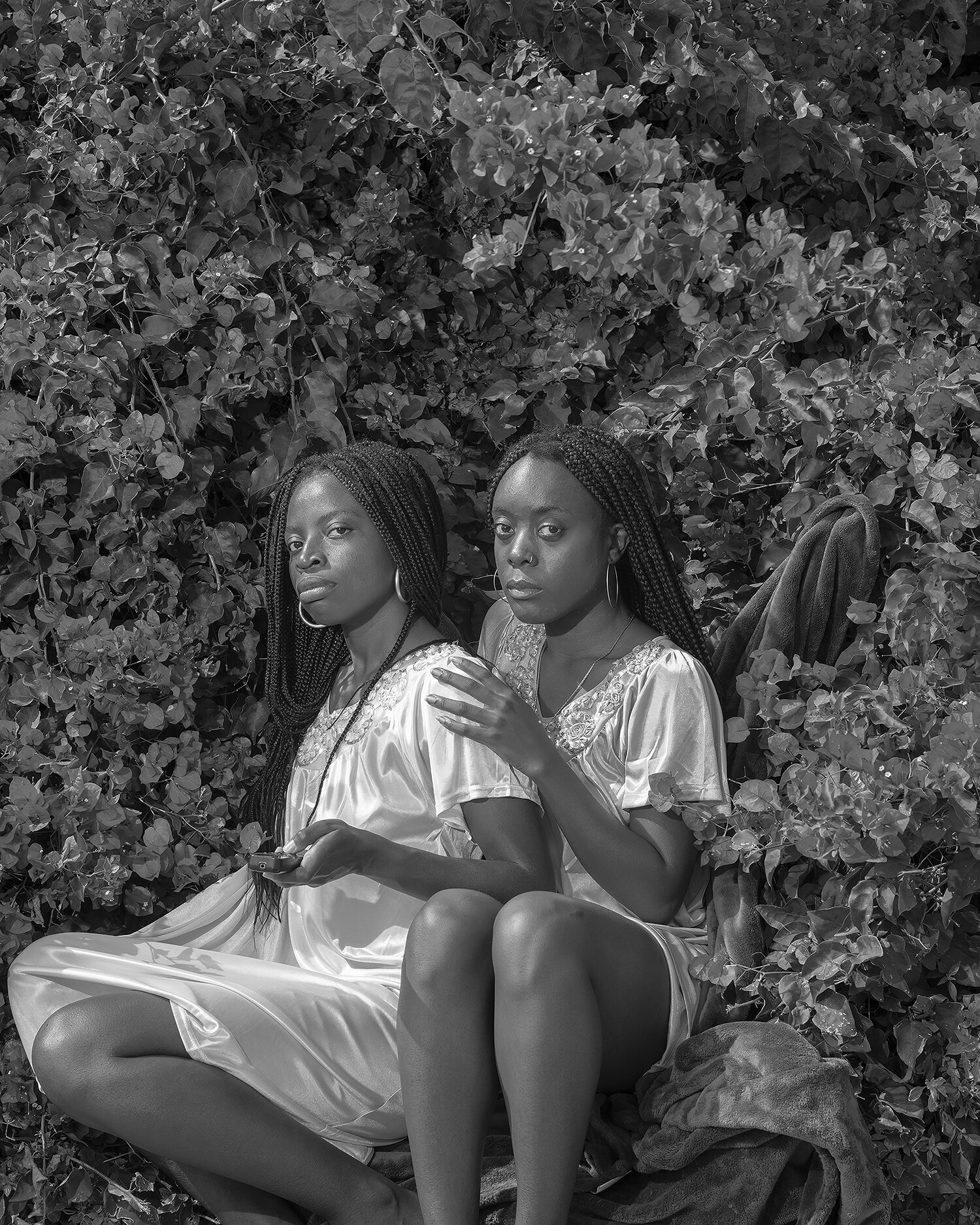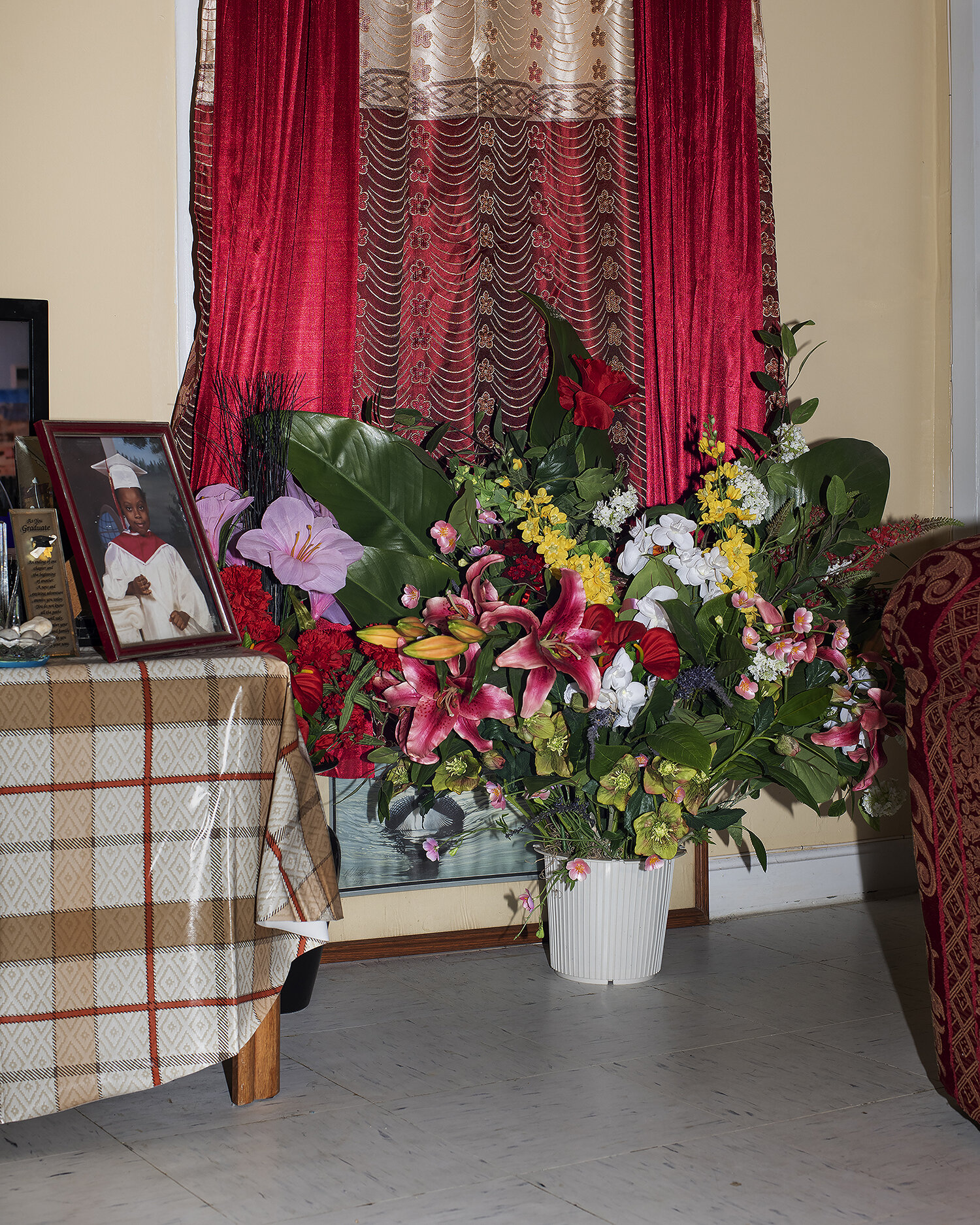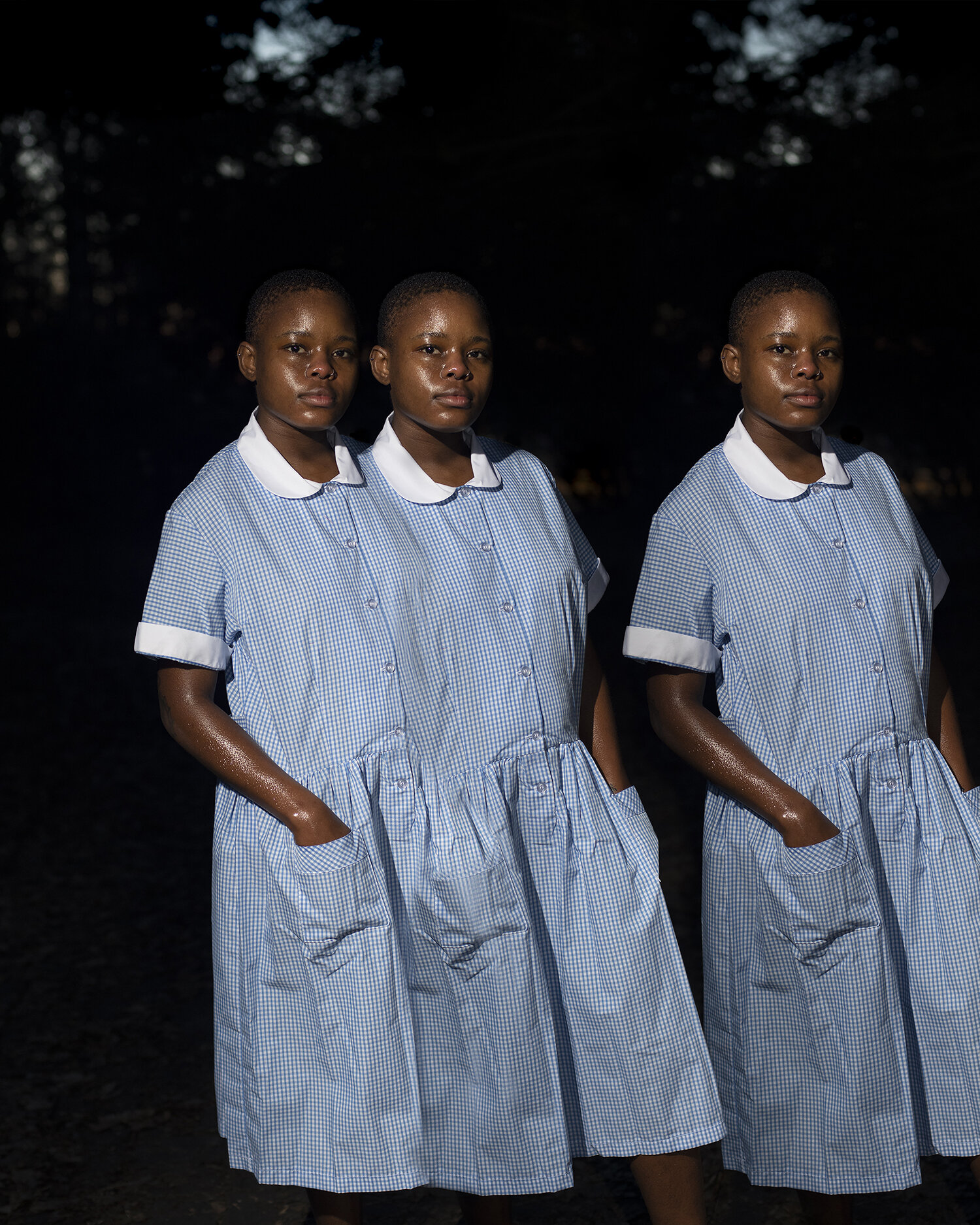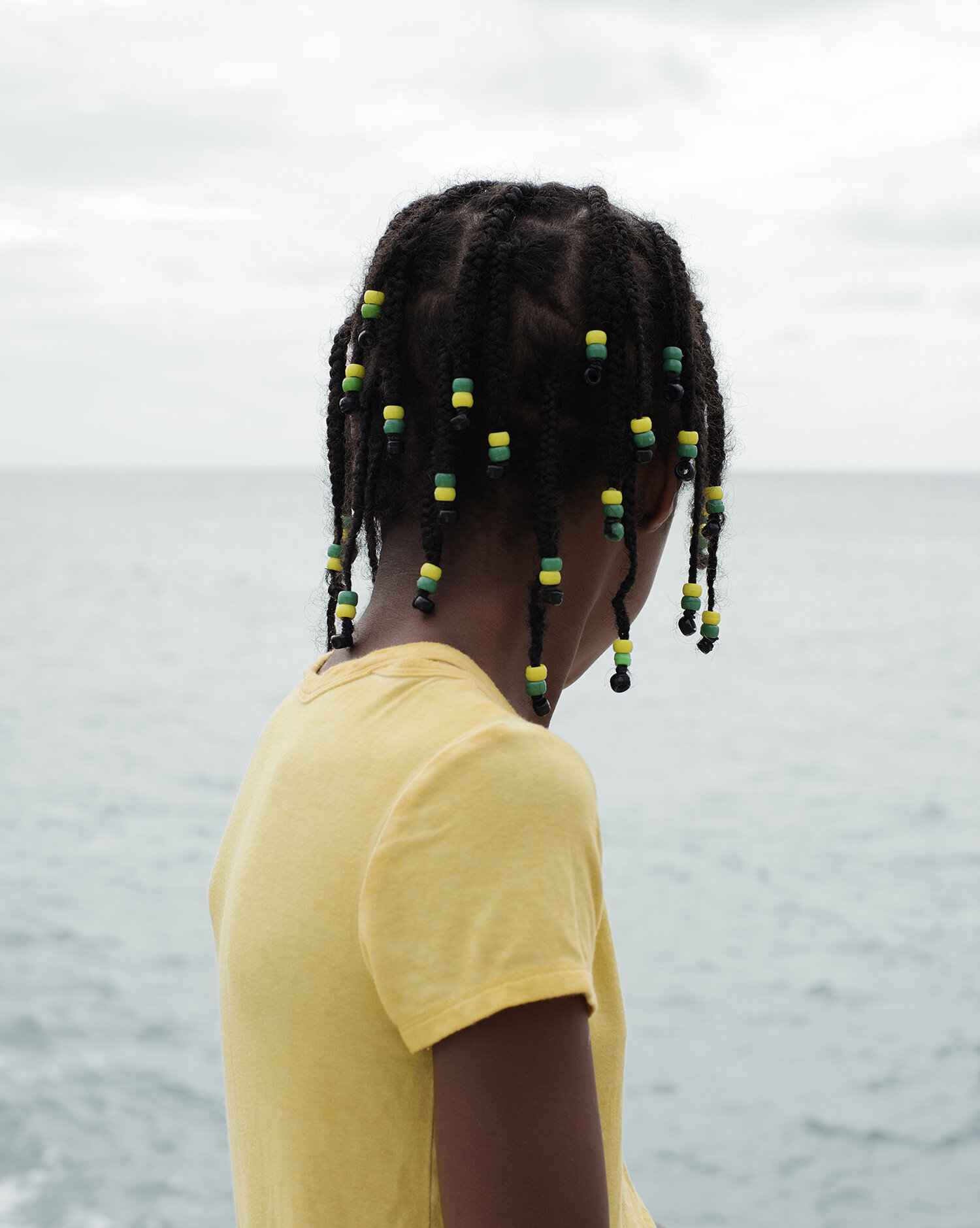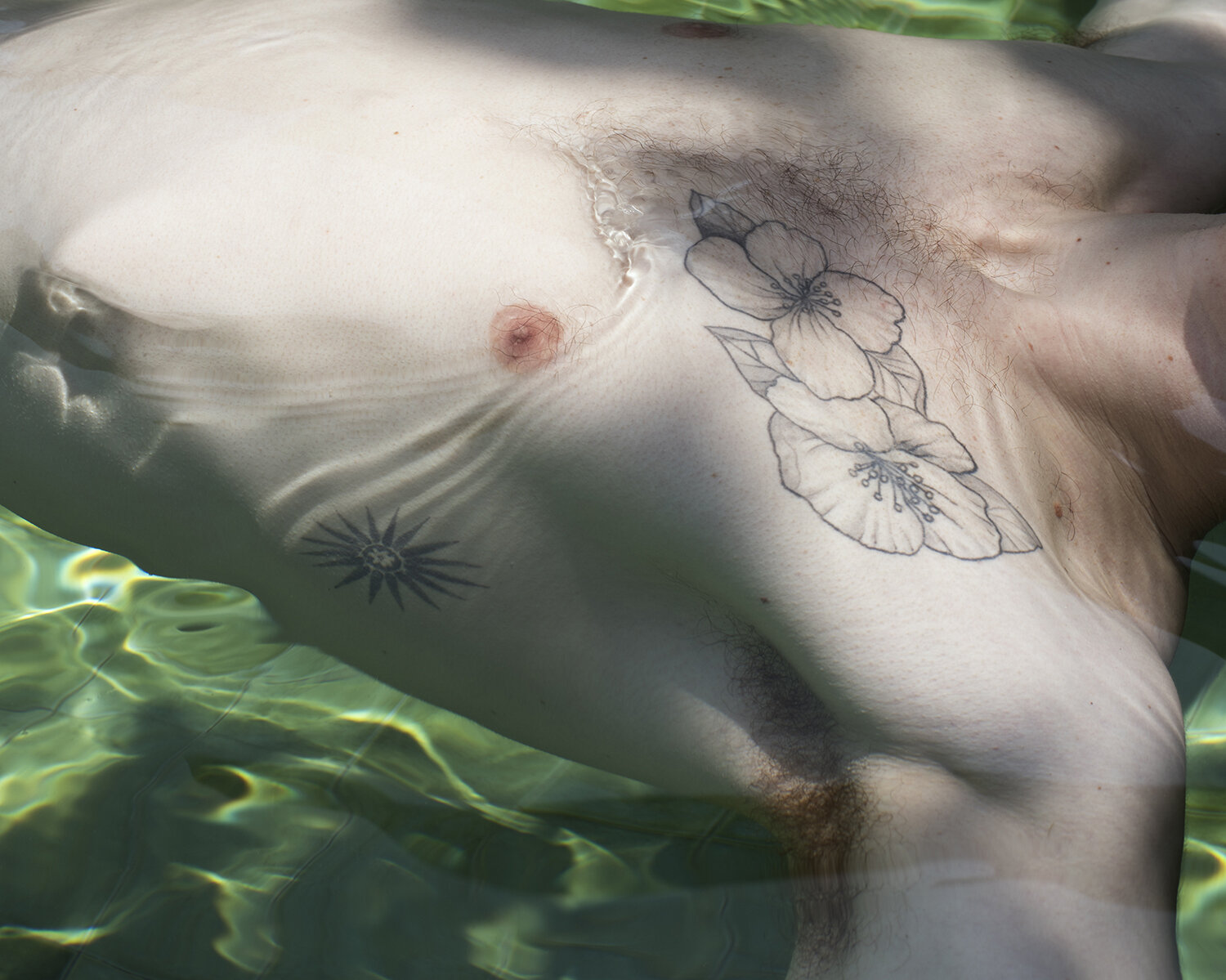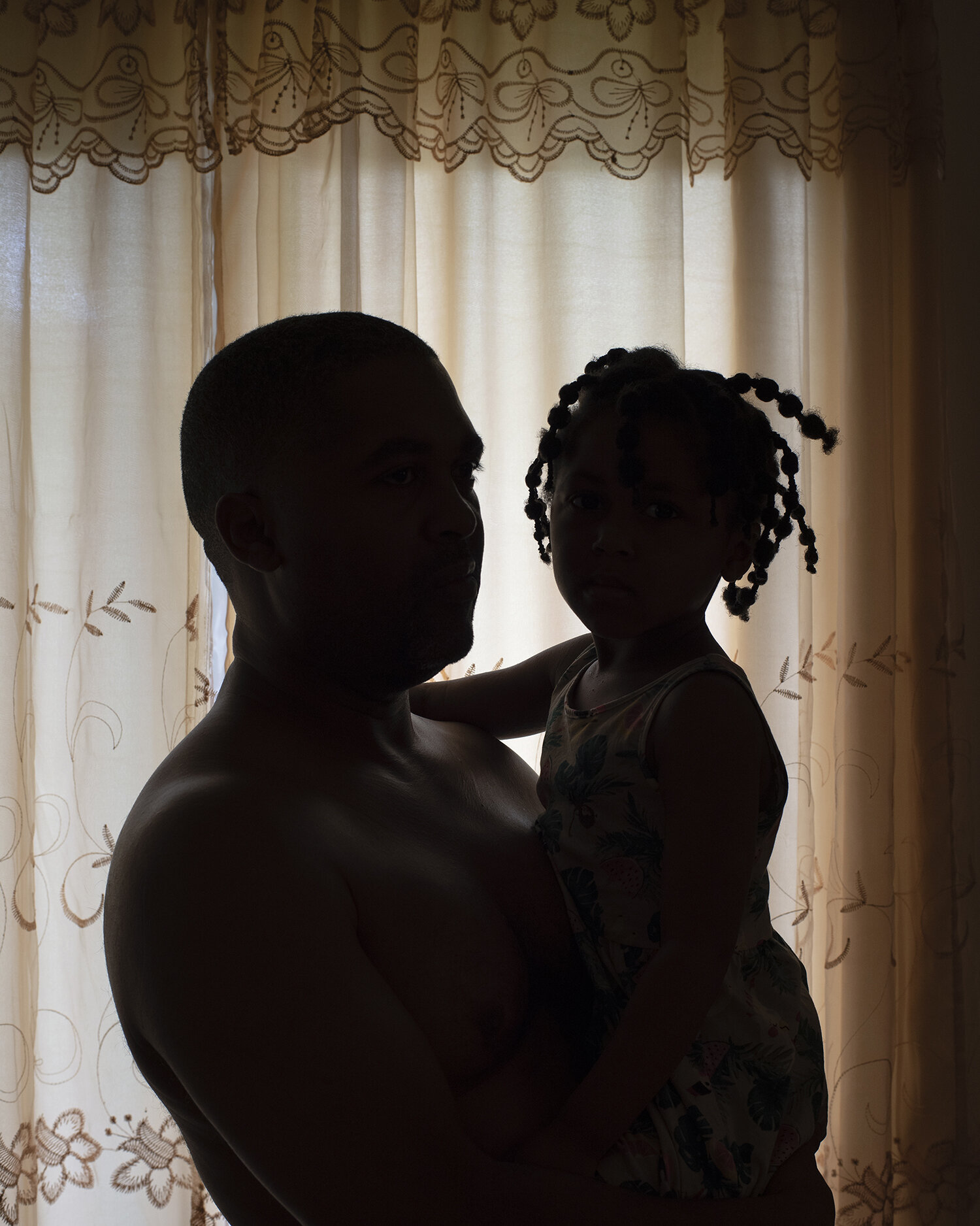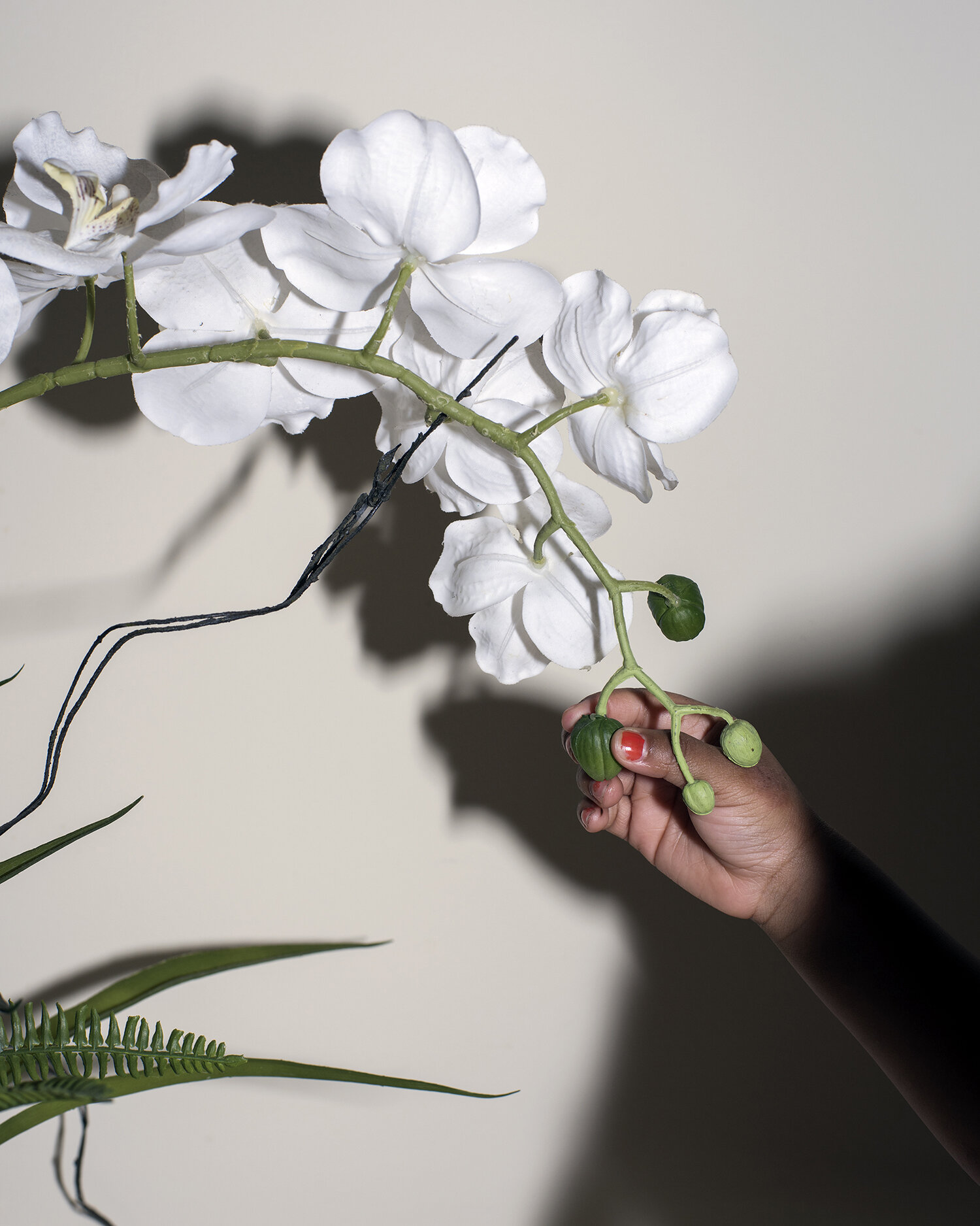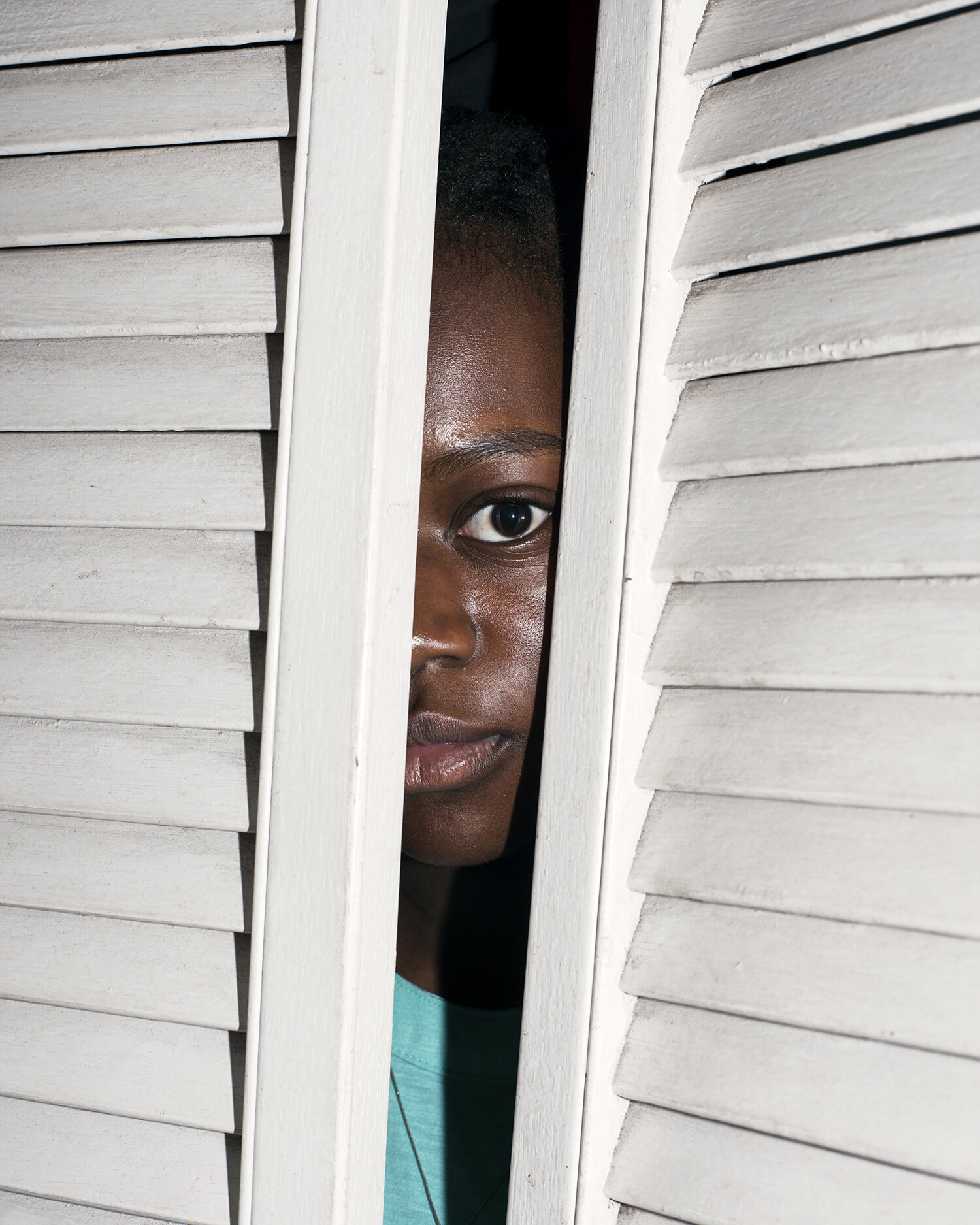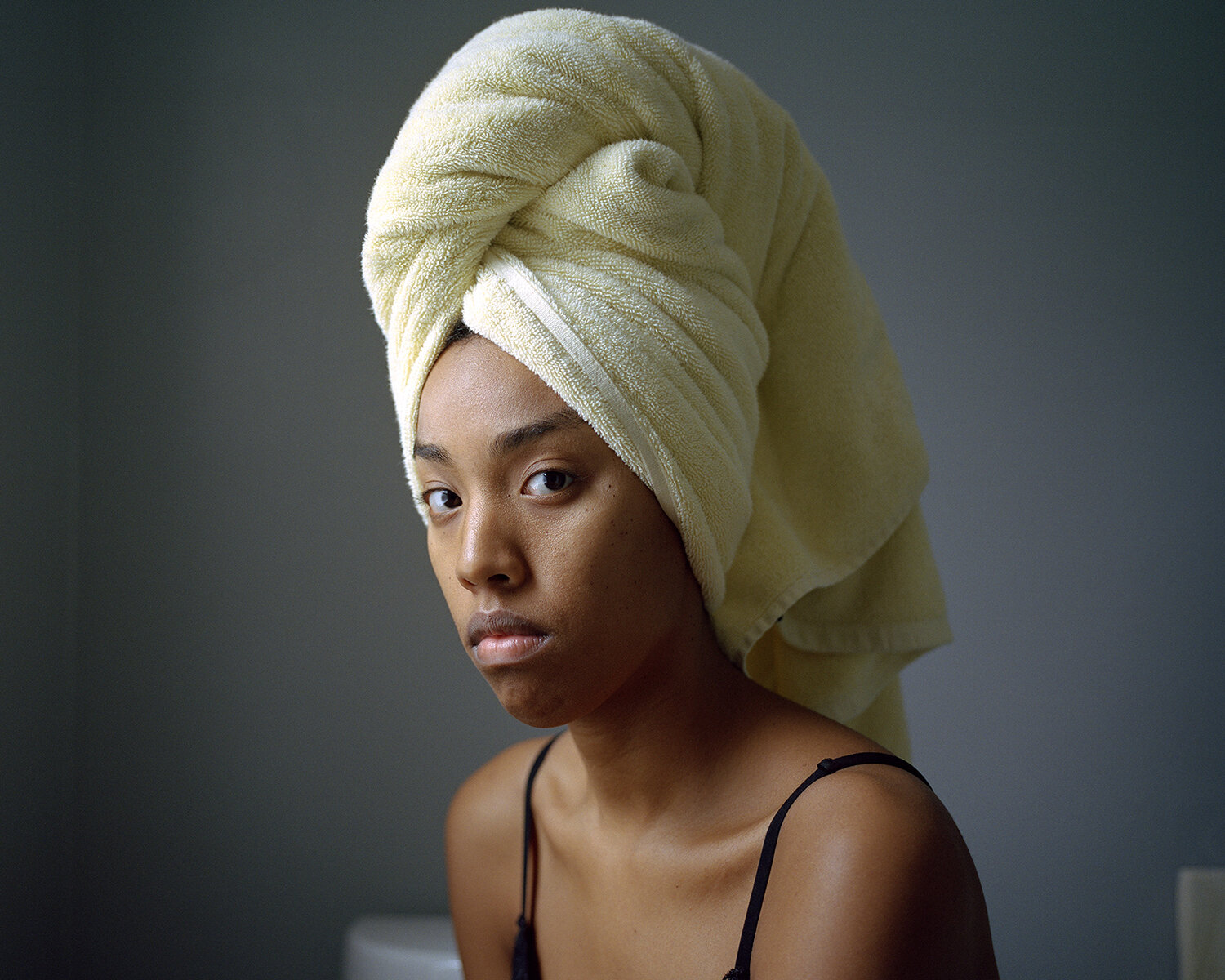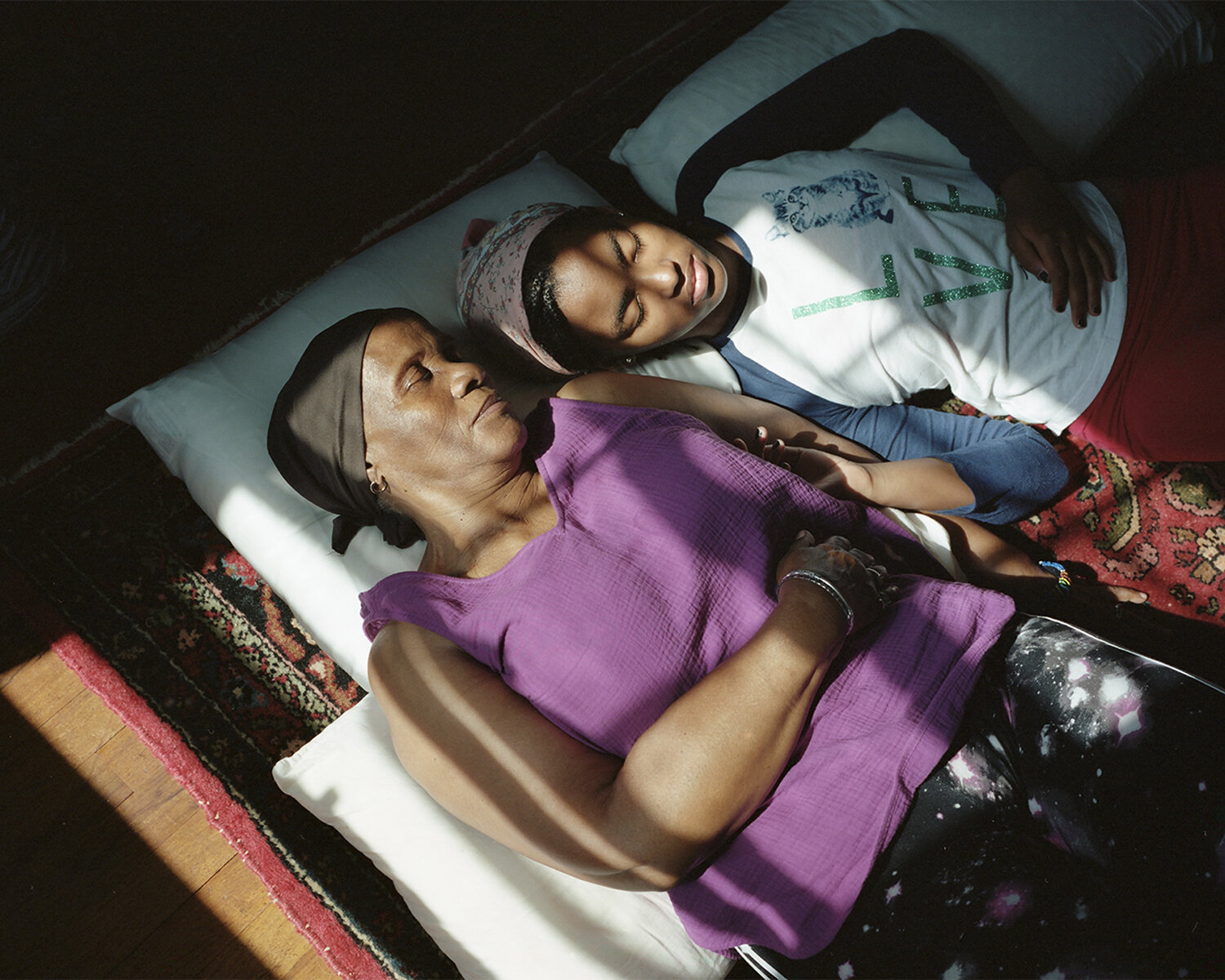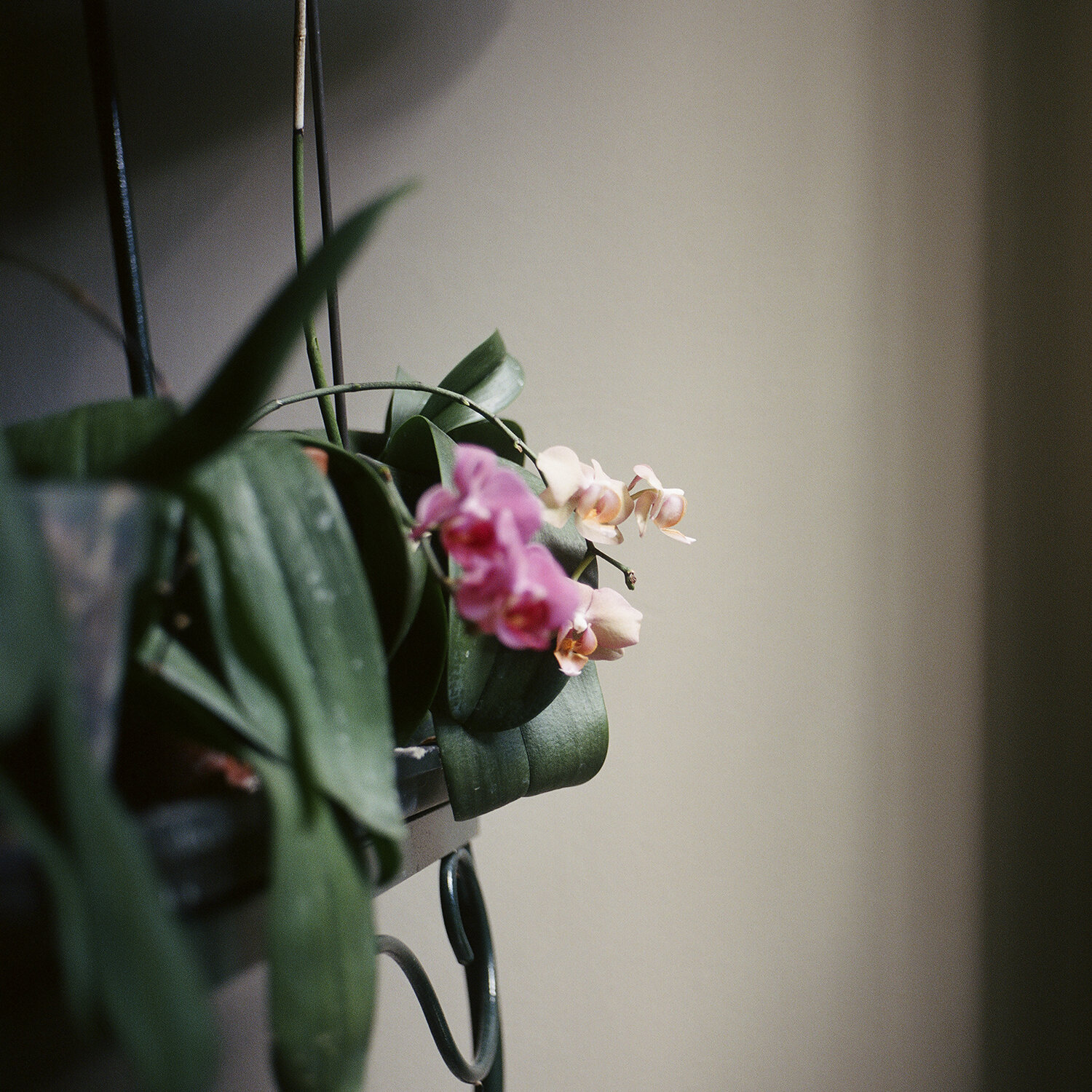Women of the African Diaspora: Identity, Place, Migration, Immigration
curated by Aaron Turner and featuring photography by Widline Cadet, Jasmine Clarke, and Nadiya I. Nacorda
December 3, 2020–January 30, 2021
Using photography, three artists reflect upon their experiences navigating contemporary life in the United States and beyond as women of the African Diaspora, while also contributing to the larger conversation surrounding inclusion and exclusion within the visual narrative of art history.
Curator’s Statement by Aaron Turner:
I firmly believe that photography can bring us closer to that which we desire to understand the most. And often, who we are has everything to do with where and who birthed us into this world. From there, we find the meaning of home, but sometimes home is not just one place. Sometimes the idea of a home can function as multiple sets of dualities. Our parental roots begin from one place, yet we grow up in another, or are born in one place, then settling in another during our adolescent years. We can also spend extended periods in areas, and it begins to feel like home, though we are distanced from past relationships with family and friends from that place of origin. Whichever location we may find ourselves, photography remains this marker of time.
In my family album archive, there are those missing pictures. The ones you can’t attach to oral storytelling. The photos you wish existed that would bring you a little closer to understanding who you are and where/who you come from.
We all make decisions in life to pursue a specific goal or understanding, and this is also the case when one chooses the camera, or rather the camera chooses them. When one points the camera at their own family, this is a very particular choice, one that you may not quickly walk away from. Am I signing up for a lifelong pursuit? Am I responsible for recording my family’s legacy through photography? Will I ever be able to turn the camera in another direction? A direction that genuinely fulfills the pursuit of understanding one’s self and being?
In the organizing of this exhibition, my goal was to help create a transformative experience. Through photography, I believe each artist has touched on the transformative process: changes in the self’s understanding, revision of belief systems, and lifestyle changes on their terms.
Jasmine Clarke has a story about her father’s recurring dream that I keep reflecting on:
“One night in Jamaica, as my father and I drove through the mountains, he described a recurring dream: he is in his hometown, Saint Mary’s, at a certain winding road that’s shaped like an N, trying to catch the bus. He misses it and has to run up the mountain through the bush and slide down the other side to catch it. This is his only dream set in Jamaica. He told me as we approached the N. I listened while chewing on my sugar cane. It’s strange hearing about a dreamscape while physically going through it—like déjà vu”
Clarke’s photographs lean into enigmatic possibilities, a cross between dreams and reality. One particular picture in mind is Olivia, Looking. The positioning and understanding of place are crucial in the photograph. This photograph depicts Clarke’s sister looking out into a void, entering or exiting a dreamscape, at a high facing outward towards the ocean. A yellow shirt contrasts against the muted sea and barely legible sky, we as the viewer are sucked into the dreamscape and Olivia, who occupies the foreground. I want that same vantage point, and I imagine myself occupying that space. At this moment, Clarke captures Olivia’s understanding of self yet, at the same time, allowing the viewer to co-occupy the space all at once.
Nadiya Nacorda’s photographs exude self-awareness through the gaze on oneself, loved ones, and objects of significance. In particular, the photograph Self-portrait #1: Wearing a Doek in Lolo and Lola’s Bathroom, from the series All the Orchids are Fine. When I first saw this image by Nacorda, I instantly was reminded of LaToya Ruby Frazier’s, Self-Portrait (October 7th 9:30 am), 2008. It’s the direct engagement with the camera, the gaze that draws you in. Seduces you into specifically thinking about both of the artist’s self-awareness and their narratives. The act of setting up the camera and looking back onto one’s one body, gaze, and position. There are many implications to draw from. Underlying is the ability to relate to others going through a similar state of being or state of self-awareness, using photography as an empathetic method of communication with others, sharing with the intention of new dialogue.
Lastly, I want to reflect on the practice of Widline Cadet, the final artist present in the exhibition. In Cadet’s images, I find a pursuit of intimacy, especially in her portraits, and a seeking of what home is or can be. Is home a physical place, is it where we find community, is home internal, is it in the oral narration of family history, how do we define this idea of home? In contemplating all of these things as individuals, then as artists, how does one connect, reconnect, reexamine lost visual narratives of representations? I think Cadet does it actively in the photograph Seremoni Disparisyon #1.20 (Ritual [Dis]Appearance #1.20), 2020. In recognition of things lost to us in the past, especially family photographs, the lack of seeing one’s self or loves ones through fixed markers of time, this to me signifies a returning gaze on the self. Cadet returns us a void in the photo, an attempt to disappear, but not necessarily so. This is true only if one accepts the formalities of the image. The flash, the darkness of night, the monochrome pallet, facing directly back into the camera, but no point of origin to gaze back into for the viewer except the body as an outline and a beam of light. The image directly confronts the pictorial narrative, considering one’s depiction. There will be a marker of my time here in this place, but I also recognize that parts of me are missing simultaneously. Cadet, instinctively, uses photography to look at representation and how people and history are represented within photography, looking at the past and present simultaneously to create new speculative spaces.
Cadet, Clarke, and Nacorda all address a diverse migratory perspective within the African diaspora on geography, landscape, portraiture, family, representation, identity, place, memory, and home in their work. In aggregating these artists’ work together, I hope to evoke a discursive conversation amongst peers and a collective understanding of place.
About the artists and curator:
Widline Cadet is a Haitian-born artist. Her practice draws from personal history and examines race, memory, erasure, migration, immigration, and Haitian cultural identity from within the United States. She uses photography, video, and installations to construct a visual language that explores notions of visibility and hyper-visibility, black feminine interiority, and selfhood. Cadet is a recipient of a 2013 Mortimer-Hays Brandeis Traveling Fellowship, a 2018 Skowhegan School of Painting and Sculpture artist-in-residence, a 2019 Lighthouse Works fellow, a 2019 Syracuse University VPA Turner artist-in-residence, a 2020 Lit List finalist, the 2020 Museum of Contemporary Photography’s Snider Prize winner, and a recipient of a 2020 NYFA / JGS Fellowship in photography. Her work has appeared in The New Yorker, TIME, and Wallpaper*, among others. Cadet earned a BA in studio art from The City College of New York and an MFA from Syracuse University. She is currently based in New York City as a 2020-21 artist-in-residence at The Studio Museum in Harlem.
Jasmine Clarke is a photographer from Brooklyn, New York. Inspired by the historical links between nature and mysticism, her images focus on the surreal qualities of our waking world. She is interested in dreams and magical realism, and likes to play with the tension between fiction and reality to create ethereal and alluring images. She graduated from Bard College in 2018 with a BA in photography. Clarke’s work has been exhibited nationally and internationally, and she was recently selected for the 2020 Lit List and was a 2020 Critical Mass Top 200 finalist.
Nadiya Imani Loyisa Ntlabati Nacorda is a Blasian artist, photographer and Taurus currently living and working in Syracuse, New York. She was born in Detroit, Michigan to a Filipinx immigrant father and a Xhosa mother. Throughout the year, she travels around the country photographing her immediate family. Her work focuses on notions of intimacy, affection, displacement, secrecy, and generational trauma within the context of Black and POC immigrant-American family life. Nacorda received her BFA in Photography & Film from VCU Arts in Richmond, Virginia. She is currently pursuing an MFA in Art Photography at Syracuse University’s School of Visual and Performing Arts. Her work has been exhibited at the Midwest Center for Photography, the Detroit Public Library art gallery, RISD's Red Eye Gallery in Providence, Rhode Island, and Candela Books + Gallery in Richmond, Virginia. She is also a 2019 finalist of the Magenta Foundation's Flash Forward competition and was selected for the 2020 Lit List.
Aaron Turner (b.1990) is a photographer and educator currently based in Arkansas. Aaron also uses the view camera to create still life studies on the topics of race, history, blackness as material, and the role of the black artist. Aaron founded a curatorial project titled Photographers of Color in 2014 to aggregate the historical and contemporary work made by artists of color working in lens-based media. Aaron is currently developing the beginning stages of the Center for Photographers of Color within the School of Art at the University of Arkansas in the form of a Research Fellowship appointment with teaching duties. His awards include 2018 Light Work Artist-in-Residence, 2019 En Foco Photography Fellow, and 2020 Visual Studies Workshop Project Space artist-in-residence. He is also the host of The Photographers of Color Podcast.

Blue Sky Books: Women of the African Diaspora
Photographs by Widline Cadet, Jasmine Clarke, and Nadiya I. Nacorda - curated by Aaron Turner - three artists reflect upon their experiences navigating contemporary life in the United States and beyond as women of the African Diaspora, while also contributing to the larger conversation surrounding…

![Widline Cadet, Seremoni Disparisyon #1.20 (Ritual [Dis]Appearance #1.20) , 2020](https://images.squarespace-cdn.com/content/v1/58fbed77f5e2316109a0d3ed/1606509058377-PN1Z50YBAL2OMJMBHO1A/Cadet01.jpg)

